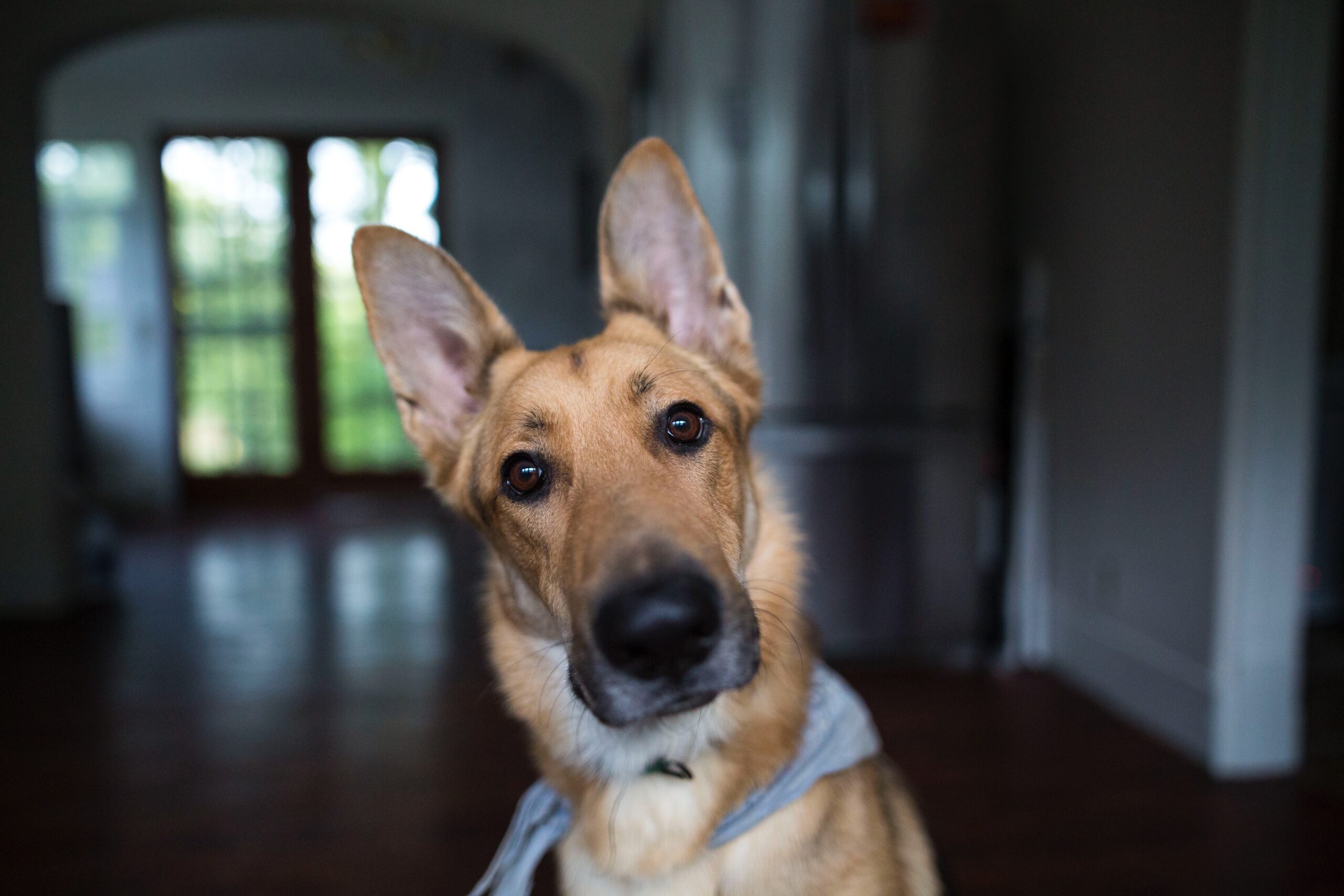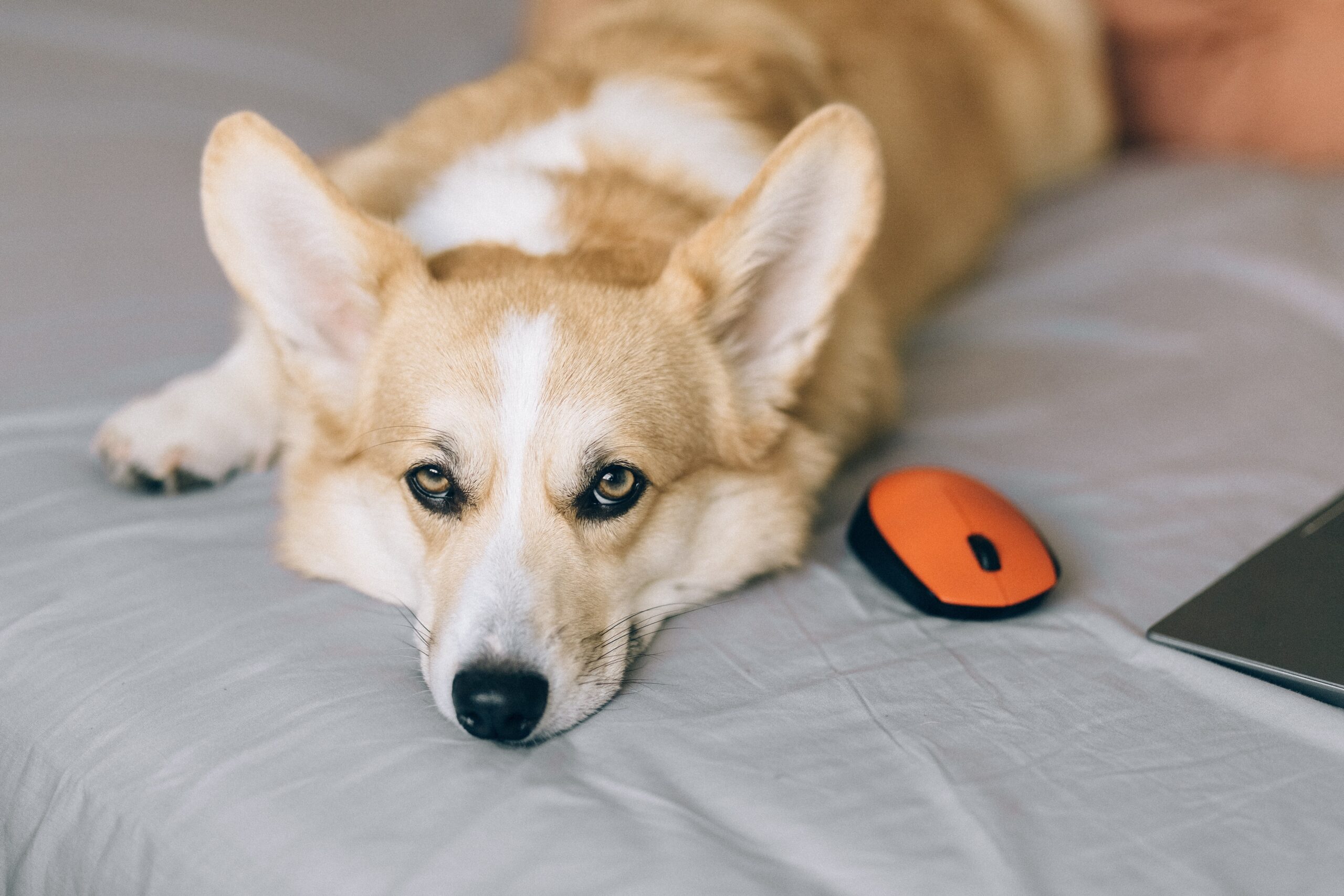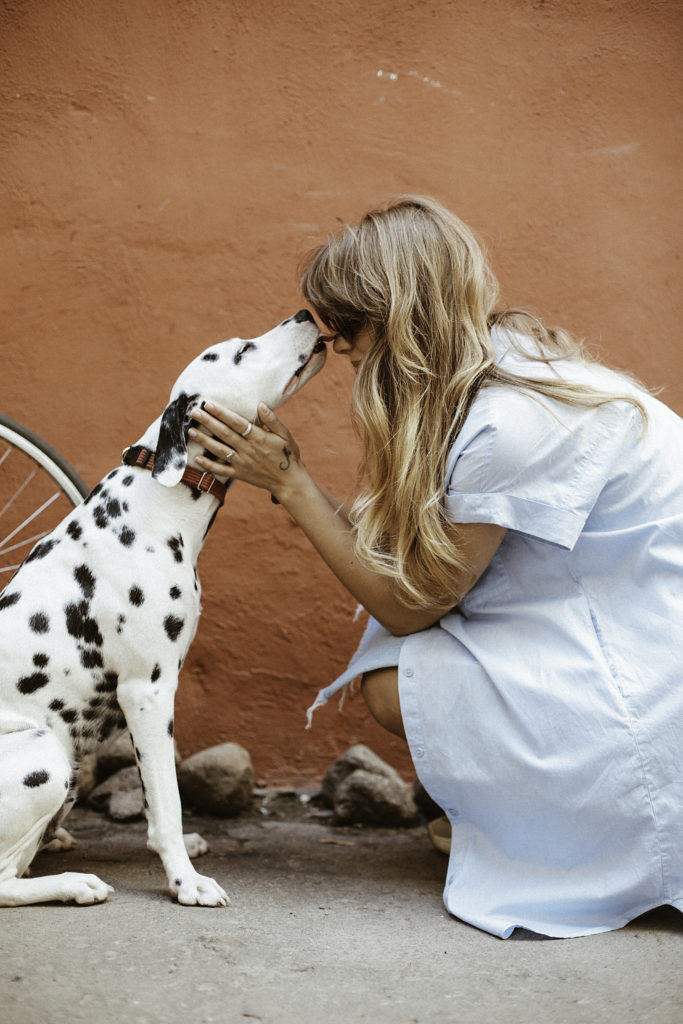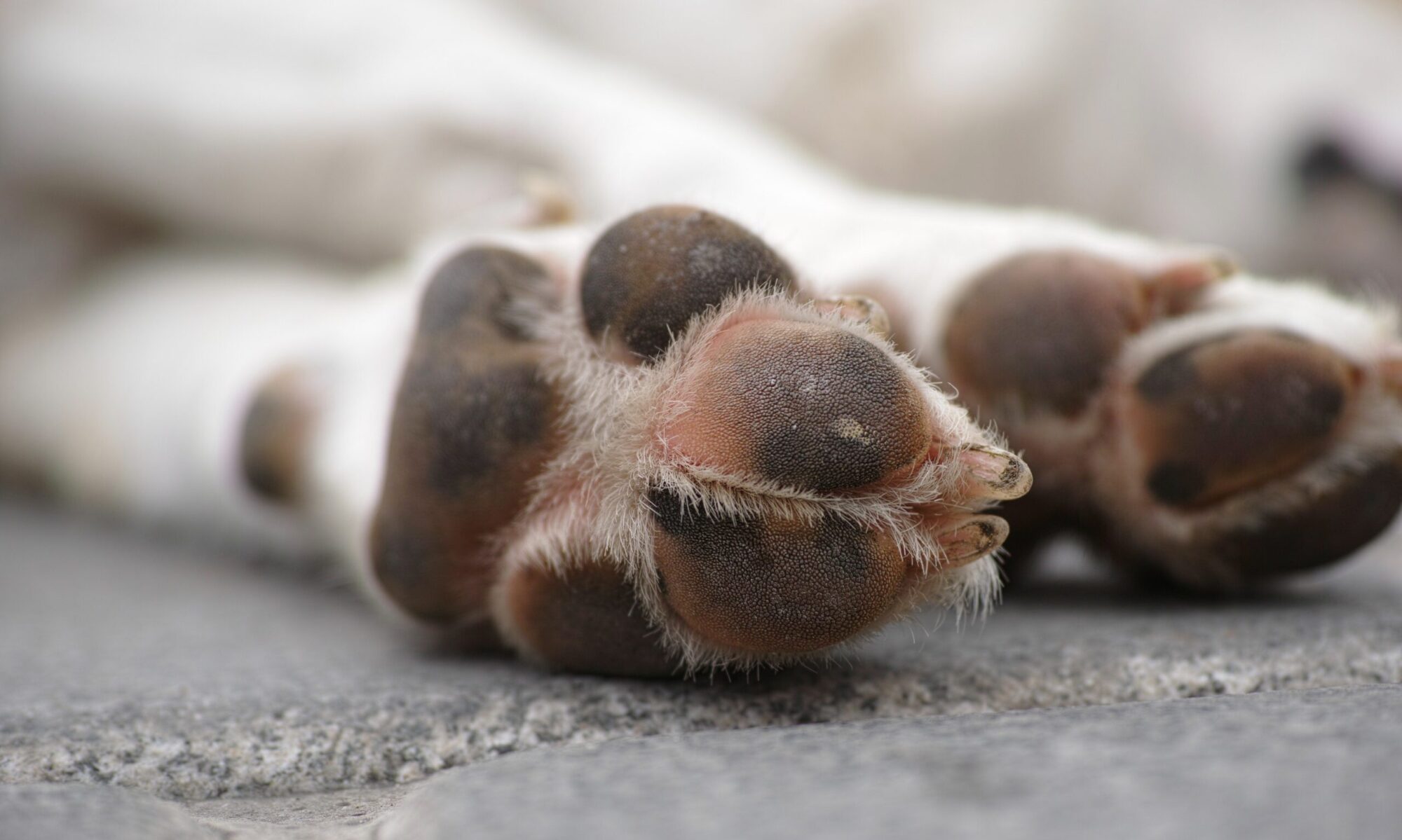
Hip dysplasia in dogs what is it?
Hip dysplasia is where either the greater trochanter of the femur bone or the pelvis acetabulum is miss-shapen or deformed.
This results in a deformed hip joint.
Meaning in none medical terminology, the hip joint doesn’t fit/function properly. There is either not enough room for normal joint ROM ( Range Of Motion/ Movement) resulting in restricted hip movements.
Or the joint has excessive ROM (too much movement) due to the hip not being supported by the pelvis. Resulting in joint instability.

Signs Of Hip Dysplasia In Dogs
So how will you know if your dog or puppy has hip dysplasia?
Well here are 5 common signs dogs with hip dysplasia show or do.
Hip Dysplasia In Dogs #1
Hip Sway
Does your dog walk like their heading down a catwalk?
A common sign of hip dysplasia in dogs is a hip sway.
Instead of the classic smooth up and down motion of their hind end, they sway their hips, side to side, like their about to hit the dance floor.
Hip Dysplasia In Dogs #2
Bunny Hopping
‘Bunny hopping’ This is when a dog tries to run or speed up, instead of moving like a horse into a graceful trot, canter, and then gallop.
Instead, They look like a bunny rabbit hopping through a field.
Both hind legs hopping together as their hips struggle with normal ROM or instability..
Hip Dysplasia In Dogs #3
Side sitting
Do they side sit? Normally a dog should sit with both knees tucked to their sides. Like those Egyptian statues of cats and dogs.
However, if they are sitting on their bum with their legs to one side, this can be a sign of hip discomfort.
It should also be noted that side sitting can be a sign of Knee issues. For example, cruciate ligament, patella, and arthritis can also cause a side sit position.
Hip Dysplasia In Dogs #4
Laying froggy style
Imagine a frog laying flat on its tummy. Its legs would be flat to the ground in an “m” shape.
If your dog is laying this way frequently then it can be a sign of excess ROM in the hip joint. Many dogs with Hip Dysplasia Like to lay this way.
Hip Dysplasia In Dogs #5
They Are Reluctant To Jump In The Car Or Go Uphill.
Jumping and climbing uphill requires hip extension which is something hip dysplasia dogs struggle with.
So if your dog is reluctant to do these normal activities, book and appointment with your vet to have their hips checked.

What Can I Do To Help My Hip Dysplasia Dog?
Taking your dog to the vet for a proper diagnosis is obvious, if you are seeing the signs listed above Don’t hesitate to see your vet if you have concerns.
Your Vet can prescribe the necessary pain and management medications.
Do not use anything as a replacement for veterinary advice.
Often what isn’t obvious is what you can do to manage them at home long term? both post-diagnosis and if young and eligible post-surgery.
I have worked as a small animal physio for 4-5 years.
Hip Dysplasia patients were common in our practice so I am here to give you some tips.
Tip #1 Swimming – Swim, Swim, Swim, And Then Swim Them Some More.
Swimming is amazing, not only is it great exercise but it is also the better way to give a dysplasia or an arthritic dog a workout.
There are often many options, from heated hydrotherapy pools to underwater treadmills available for dogs. Even swimming them in your local river is better than not swimming them at all.
Swimming takes all the weight and pressure of the joint. Allowing muscle to build and help support a weak or compromised joint. All the while not causing inflammation and pain like other land based activities.
However, Avoid uneven surfaces like sand, gravel and stones. Uneven ground is not a friend for an unstable joint. This is why a registered swimming facility is better than the beach or river.
Especially for larger breed dogs, that are not easily carried to the waters edge.
Tip #2 Get Them On A Good Diet
Don’t muck around. Dysplasia is a joint disease and often leads to OA Osteo Arthritis. There is no need for joint supplements, or fish oil, and glucosamine.
Veterinary based, science made diets have it all in their specific joint diets.
These dogs need good nutrition to feed the right nutrients. Diet can play a huge role in how long a dysplasia suffering dog can remain mobile.
Talk to you vet like yesterday! about what diet can help them the most. Be wary of home remedy diets and raw feeding. Veterinary recommended diets are science-based.
Your vet recommends them for a reason and no its not for money!
Tip #3 Heat And Cold
Keep them warm especially in the winter. Doggie electric blankets, wheat bags, and sleeping inside the house rather than outside.
Keeping the cold away in the cooler months makes a big difference to a Dysplasia and/or arthritic dog.
Cold – Now I’m talking Ice packs, you can use these when you know they have overdone it.
For example, you’re out for your daily walk and bang! an excited puppy comes running up to your dysplasia / Arthritic dog. Your dog loses their mind for a minute and acts as though nothing has ever happened to their joints.
You know there will be repercussions to their mad 5 mins. ICE! get in there before the inflammation does. Ice pack them like you just sprained your ankle.
30 mins on 30 mins off for 1-3 days depending on the severity of the flare. then back to keeping them warm and heated.
Tip #4 – Keep Their Core/Abs Strong.
Yep – just like humans a strong 6 pack helps everyone.
A strong core will help your dog move, balance, and compensate for their sore joint/s.
How is it done? well its easy! Tummy tickles!!!
Literally, while your dog is standing in front of you give their tummy just that, a little tickle. Now Watch as their back arches up and they do the doggie version of an ab crunch!
You can not over do tummy tickles, 100+ a day is good work! A strong core is a great asset for both humans and dogs.
In Conclusion…
Hip dysplasia in dogs is when the hip joint doesn’t fit/function properly.
Signs your dog has Hip dysplasia:
Hip Sway
Bunny Hopping
Side sitting
Laying froggy style
They Are Reluctant To Jump In The Car Or Go Uphill.
Tips To Help Manage Them
Always take them to your vet first for appropriate diagnosis and medication.
#1 Swim them!
#2 Get Them On A Good Diet
#3 Use Heat And Cold packs
#4 Keep Their Core Strong
Sign up for new post updates and reminders here:
As Always Thanks For Reading.
